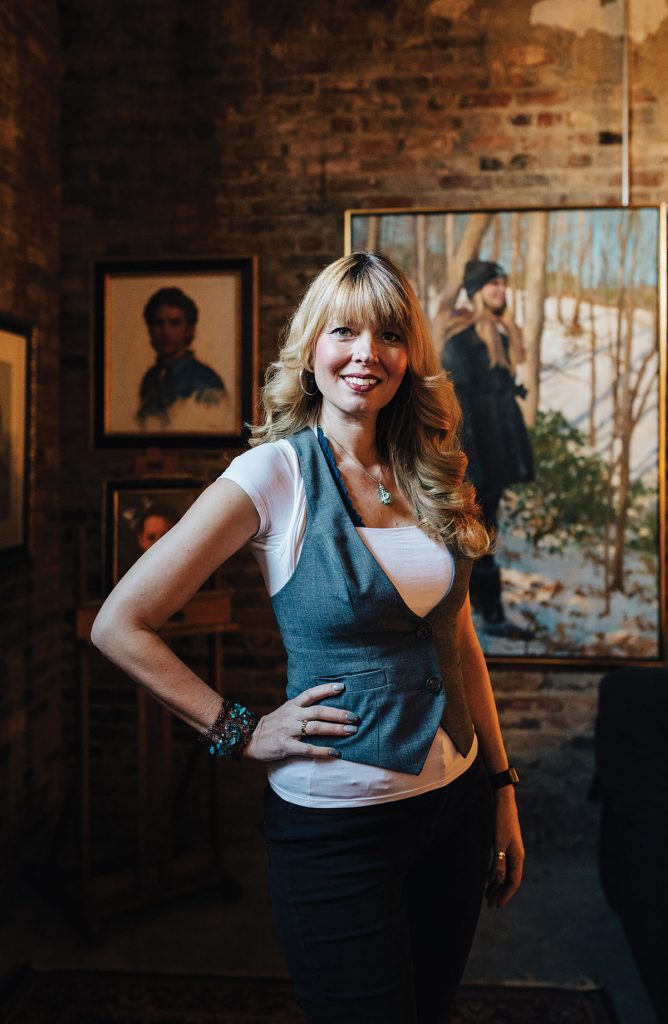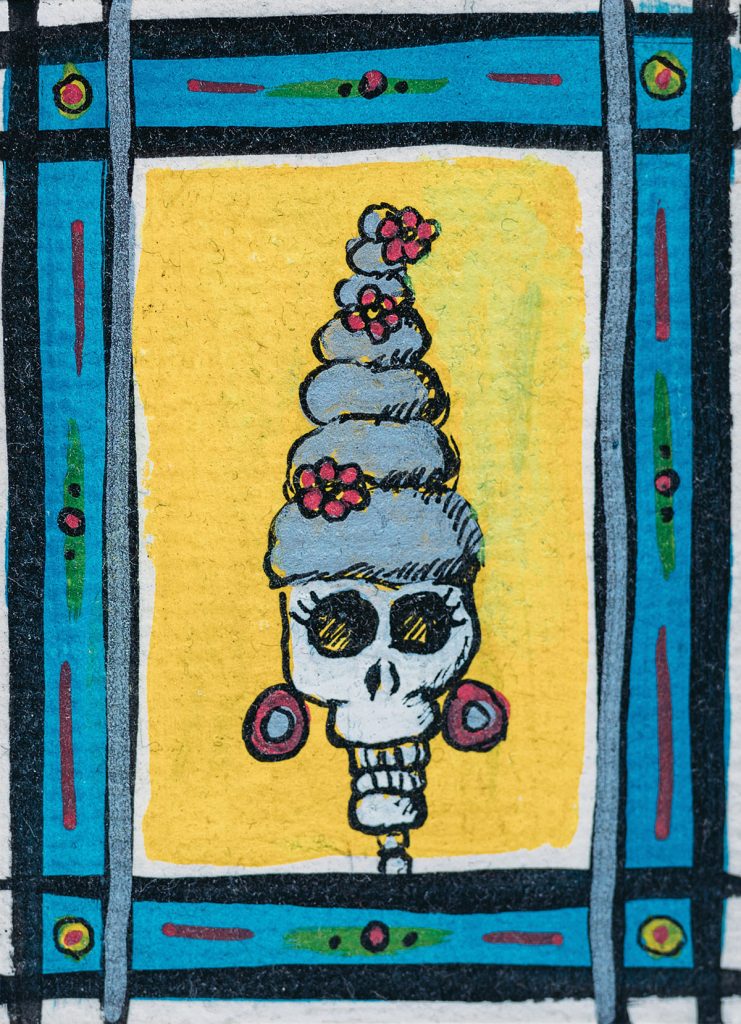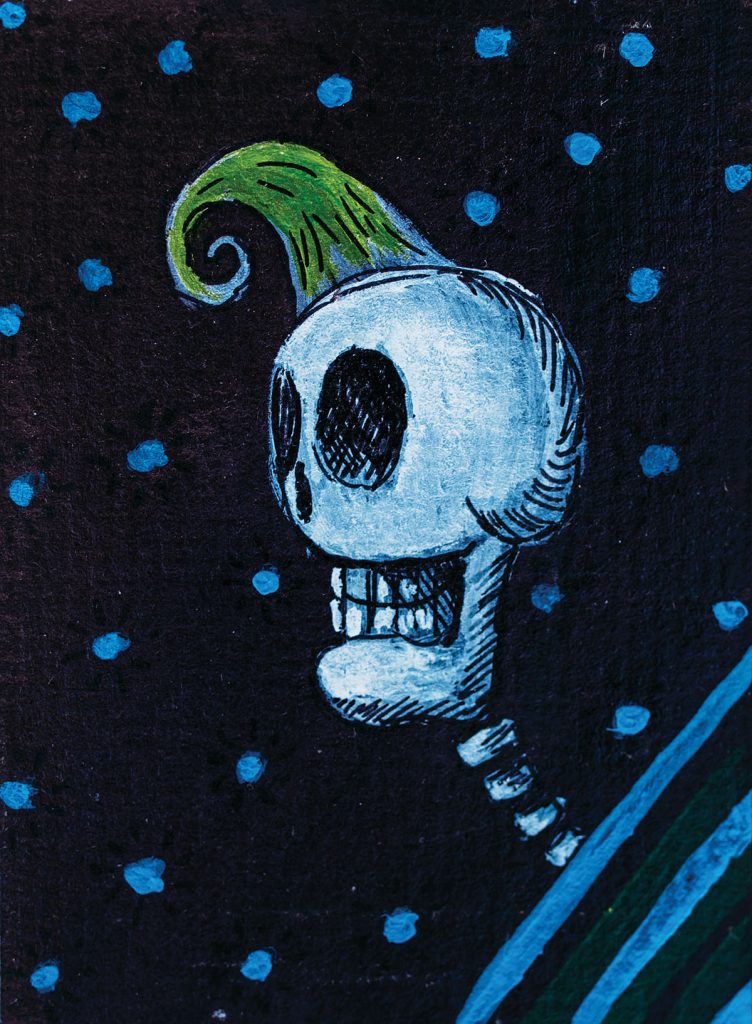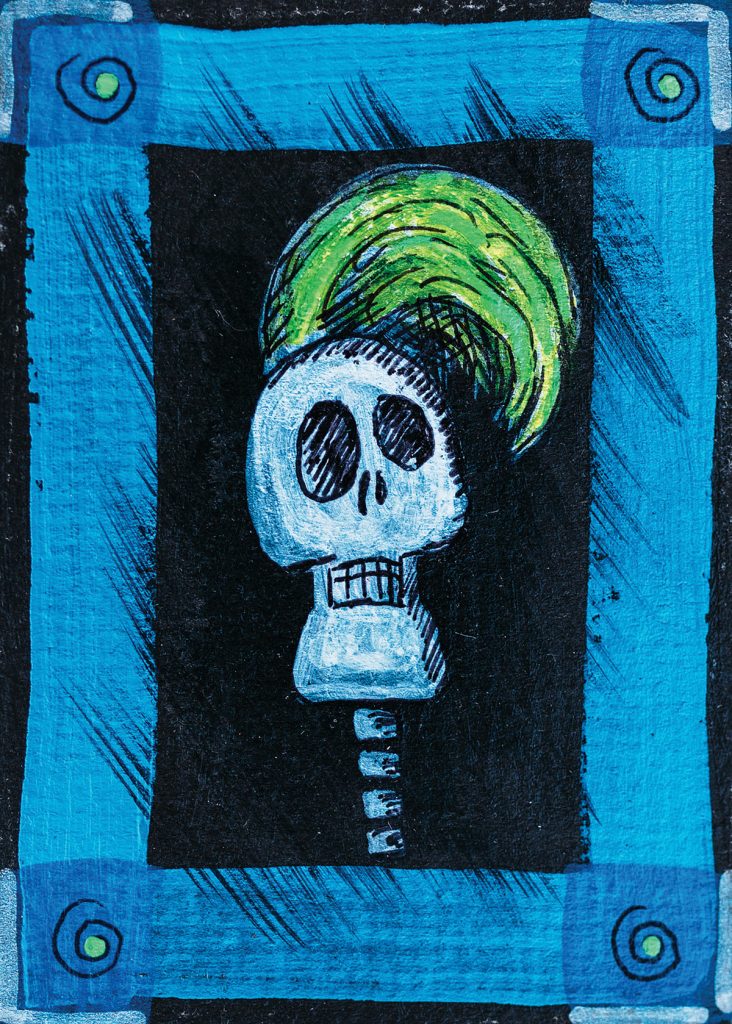
Portrait by Rachel Pressley
“Skulls are what we all are underneath — a universal human equalizer and common denominator,” says artist Kim Nelson.
Her fanciful skull-themed pieces, painted on board, share some conceptual and compositional strands of DNA with the traditional calavera art that celebrates Día de los Muertos. But flip them over and there’s an accompanying bio or fanciful quip. On the back of a painting of a skull with pigtails and a crown it says, “Penelope dreamed of marrying a prince one day, but then she realized all she really wanted was the crown — so she made her own and wore it proudly.” That narrative adds a dimension of humor and personality to each character she conjures up. What inspires Nelson most, though, is the therapeutic aspect of creativity.

Photo by Rachel Pressley
“My husband and I used to own and operate art galleries. He’s also a painter, and we had a gallery in Tryon [Skyuka Fine Art] for about five years. Working there, I started getting interested in people who collected, and finding out the reasons why they collected. I saw that art has such a strong emotional connection for people, and I started realizing the healing properties of art.”

Photo by Rachel Pressley
That realization was made more vivid and poignant when Nelson visited a close friend who was in hospice care. They devoted that visit to a discussion of art. “She could barely speak because she was so weak and exhausted,” recalls Nelson. “But the next day I went to visit again, and she was totally invigorated. She was up and moving all around, showing me all of her artwork. Her husband told me that the minute after I left the day before, she got up and started sketching.
“She died a week later and that just hit me. I realized I needed to do more. Just selling art was no longer going to be enough for me.”

Photo by Rachel Pressley
Nelson had witnessed the practical application of art as a remedy for the kinds of anguish that modern pharmaceuticals can’t dislodge. That led her to the discovery of art therapy as a career path.

Photo by Rachel Pressley
“I found out there was a program at Lesley University, the first university to embrace the expressive arts in therapy for counseling. Although I was married, raising children, and running a business, I jumped right in. It was intense. I went to Cambridge each summer for three years and did the rest of the work online, until I completed the coursework and earned a mental-health counseling degree.”

Photo by Rachel Pressley
Her research for her thesis was conducted in a geriatric-community hospital setting. “At first the patients would put up resistance, saying things like, ‘I can’t do art, I’m not artistic.’ So it was about breaking down creative resistance.” Nelson would encourage them to remove those internal barriers by helping them trace their memories back to the time when, as children, they made art as a way to play, just for fun. She’d help them explore the reasons why they stopped, in order to overcome that deep-seated hesitation and once again tap into an innate impulse.
“We are all born creative,” Nelson says. “It’s who we are.”
Kim Nelson, Tryon. Nelson’s art is shown in the gallery at 362 Depot
(362 Depot St., River Arts District, Asheville; on Facebook and Instagram). For more information, e-mail kim@richnelson.com or call 828–817–3784.
These are so cool and whimsical. Unique, too. Congratulations, Kim!
I’m so moved by your pieces and story, Kim!!! And, I appreciate your views and love that you’ve evolved into doing healing work with art!!!
Very good article Kim, I love your thoughts. To share them is really special. Love your work. Best wishes
Frances🌺👒